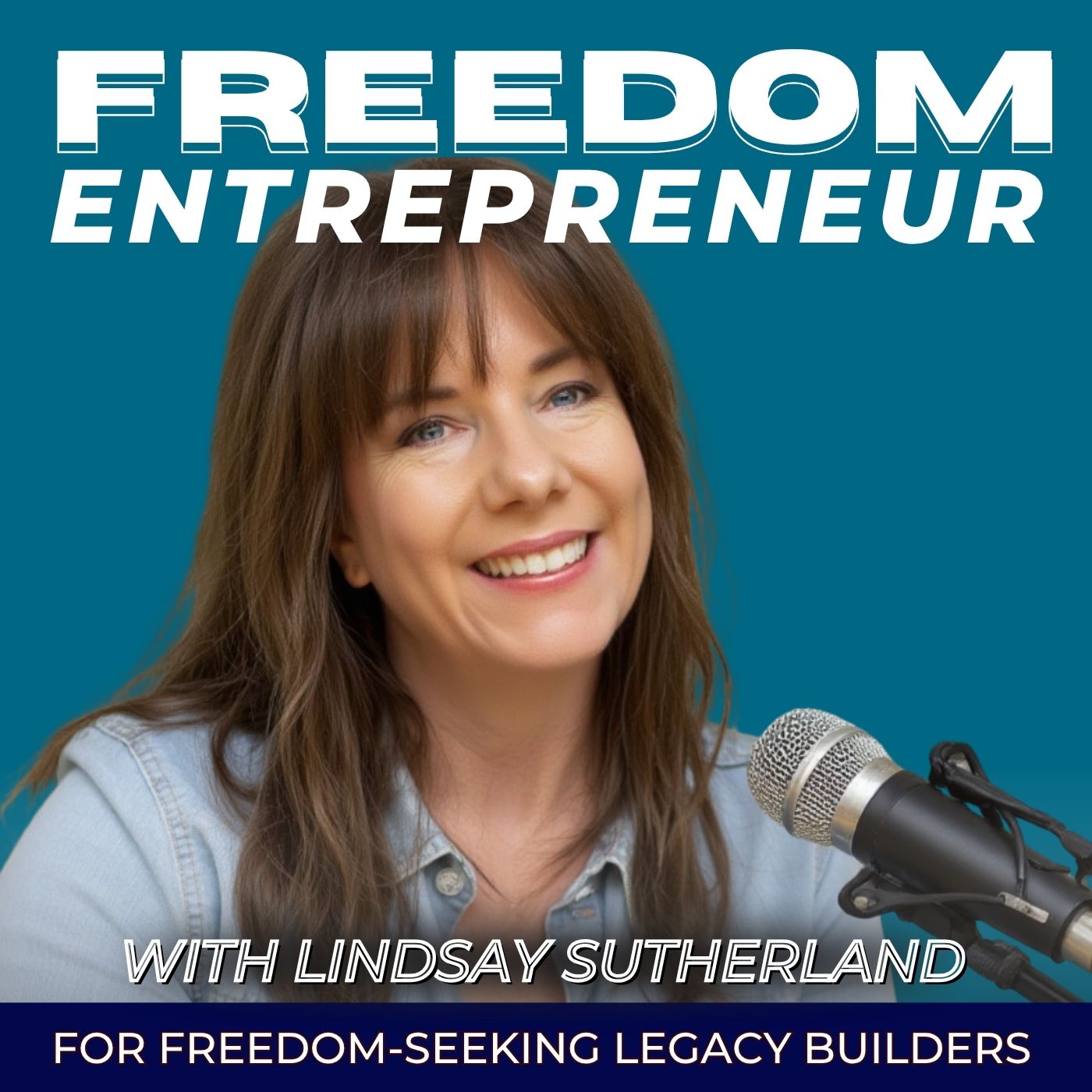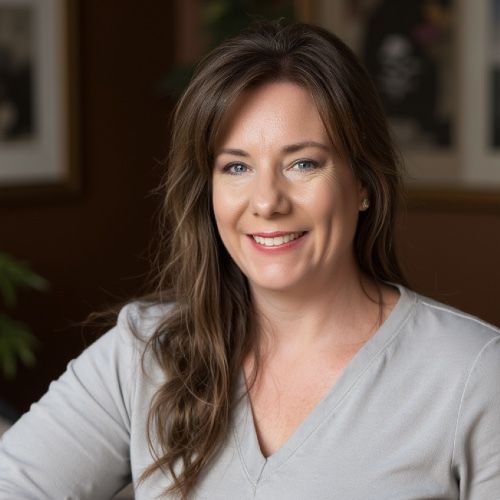Episode 182
How to Build a Business Model That Supports Freedom
What if the way you set up your business is secretly keeping you trapped?
In this episode of The Freedom Entrepreneur Podcast, I share how many entrepreneurs unintentionally design businesses that steal freedom instead of creating it—and the exact steps you can take to avoid that trap.
Inside this episode, you’ll discover:
✅ 4 common business model traps that keep you stuck in the grind.
✅ The 4 key components every freedom-oriented business model must have.
✅ A simple test to see if your business can scale without stealing more of your time.
I’ll also share part of my own journey—how I built a business that hit every one of these traps and what it took to shift into a model that supports both income and lifestyle.
Freedom isn’t about chasing the latest trend or side hustle. It’s about creating a model that works for you, your family, and your future.
👉 Ask yourself this week: Is my business model supporting my freedom, or stealing it?
📲 Ready to streamline your operations and reclaim your time?
Book a consultation or text SYSTEM to 55444 to get my Bottleneck Assessment Blueprint.
Many entrepreneurs unknowingly build businesses that trap them instead of setting them free. Learn how to spot the hidden flaws in your model and the shifts that create true freedom.
tags: business systems, business automation, business simplicity, business ownership, building business
Looking for an all-in-on CRM Solution? Check out Biz in a Box Solutions - https://bizinaboxsolutions.com
Key Moments & Timestamps:
- [0:00] Welcome & Introduction
- Lindsay sets the stage for the episode and explains why your business model matters.
- [1:21] The Trap of Custom Work
- How taking on every project leads to burnout and a business that feels like a job.
- [2:28] Four Business Model Traps
- Lindsay breaks down the most common traps: trading time for money, over-customization, single income streams, and owner-dependent operations.
- [4:03] Personal Story: Falling Into the Traps
- Lindsay shares her own experience of building a business that stole her freedom.
- [4:56] What is a Freedom Business Model?
- The difference between chasing trends and building a sustainable, scalable business.
- [5:42] Four Components of a Freedom-Oriented Business Model
- Profitability, automation, scalability, and simplicity explained.
- [7:54] Quick Self-Assessment
- A step-by-step test to see if your business model supports scalability and freedom.
- [9:23] Real-Life Example: Systematizing Custom Work
- How Lindsay helped a client turn a custom process into a repeatable system.
- [10:23] Micro Adjustments for More Freedom
- Practical tips: group offers, branded packages, and recurring revenue.
- [12:21] Subscriptions & Retainers
- How to create predictable income and long-term client relationships.
- [13:41] Final Thoughts & Call to Action
- Lindsay encourages listeners to assess their business and offers resources for streamlining operations.
Transcript
What if I told you that the way you set up your business is secretly keeping you trapped? You didn't mean to. In fact, you didn't even know better or else you would've done it differently. The good news is, it's not too late today. I'll share how your business model might be stealing your freedom and the simple tweaks to get it back.
t first, you were excited to [:You could figure it out. It worked for a while. Money was coming in, your schedule was packed, but over time you realized every single project was custom. Nothing about your process was repeatable. Every new client meant hours of fresh research, endless revisions, and late nights trying to deliver on a promise.
Soon your income started to plateau, even though you were working harder than ever. There just wasn't any more of you to give. Vacations, forget it. If you're not working, your income stops. That's when it hits you. You hadn't really built a business, you built a job. Except this time, you're the boss, the employee and the customer service team all rolled into one, and this is the trap.
So many entrepreneurs fall [:Number two, over customizations saying yes to everything clients want instead of offering defined packages. Makes each project feel brand new. Thus. There's no efficiency. The third common business model trap that can limit growth is setting your business up around a single income stream. In some ways, it's, you know, people will say, well, that makes sense.
ype of offer or specifically [:Suddenly people who made their living. With graphic design are finding it very hard to get clients. Number four, owner dependent operations. If the business can't run without you, you've just built a job, not a business. This is very common in service-based businesses. Anything such as the trades, home services, digital marketers, and agency operations.
job, [:I chased the income and unknowingly I built a business that fell into all four of the traps we're talking about today. It left me feeling depleted and frustrated. But it also gave me one of the most important wake up calls of my entrepreneurial journey. I realized freedom isn't just about making a lot of money or jumping on the latest side hustle trend.
Real freedom comes from building a business that supports your lifestyle, one that's sustainable and even capable of carrying on as a legacy for your family. The good news is once I saw the pattern, I was able to correct it, and you can too. Before we jump into the four steps that build a freedom oriented business model, I wanna clarify the difference between a business model and a business.
ess is huge. Think about it. [:They take a ton of work to set up constant management and the pressure of chasing the next hot thing just to keep money flowing. A freedom business model, on the other hand, isn't tied to a fad. It can be built around any business you choose so you can actually do what you love while still creating sustainability and scalability.
flects the value that you're [:Either way, if you are just trying to cover your cost. Then you're really not building a business for profitability. You're just charging somebody for your time. Number two, automation. Listen, in today's day and age, we are so blessed to have so many tech systems to help us build systems for marketing, client onboarding, billing everything.
Every, almost every single piece of your business can have some automation built in. I encourage you to look into this and leverage these technologies to support, either, whether you're a solopreneur or you have a large organization. In either case, automation is a key component of a freedom oriented business model.
scalability, build products, [:Go in and build the system and then. Offload that system to somebody else, train them to manage it. Last, but not least, simplicity. Keep your business clear, make your offers and your packages easy to explain and easy to deliver. The biggest mistake I see people make is they overcomplicate things, and this is where it ends up building a business that requires you to be in the middle of it because you are the expert and if you want to build your business for, for growth, it's got to be simple.
pped as your business grows. [:It's A PDF that walks you through six key systems in your business. You literally just answer the questions and grade yourself on a scale of one to five by the time you're done. You're gonna be able to see which parts of your business need the most help, and it really helps narrow it down so you can focus on what parts of your business to organize rather than just feeling overwhelmed.
Okay, now back to what we were talking about. If we're gonna do a quick test to see if your model supports scalability. Number one, audit your offers. Which ones require your direct time versus which ones can run without you. If you can't run any, if they're not running without you, ask yourself, what could I do differently?
Number two. [:Right now, she's also building a school, teaching other people how to become Christmas decorators. I asked her as we were developing the system for her, for her school and her students, I said, explain to me your estimating process. It was so custom. She said, Lindsay, every job is unique. Every job is different.
e were able to take what she [:Into a system for her estimating something that she hasn't been able to do for 25 years. Now we have a simple system that would actually put her in a position to be able to replace herself as an estimator in her business. So that's really important and I'm, I promise you, if you think that it's not possible, it is possible.
You can certainly build your business so that you could be replaced, and that's the goal. Number three. Revenue versus lifestyle check. So does your current model allow you to hit income goals and live the lifestyle you want, or does more revenue just equal more hours? Listen to yesterday's podcast on how to avoid feeling pulled in too many directions for a deeper dive on this topic.
ake to to actually fix them? [:Using that example of the Christmas decorator, that's ultimately what we did. We took hours of time and turned 'em into packages. So rather than customizing the actual. Product being installed in the decorations, we focused more on bundling time and it makes it much more sustainable and easy to clearly explain.
One of the smartest ways to create true freedom in your business is through subscriptions or retainers. Instead of relying just on one time projects or sales. Reoccurring income gives you predictable cash flow and stability. Subscriptions can take many forms, information based like so. Example, built around a key topic where you provide ongoing resources, training, or community support.
Or they can be [:Transform a one-time transaction into a lasting relationship while giving your business the steady reoccurring income that fuels long-term freedom. Here's the facts. Freedom isn't just about money. It's about the right model and system. A freedom-based business runs on simplicity, scalability, automation, and profitability.
, [:Thanks for tuning in. Until next time, bye for now.





